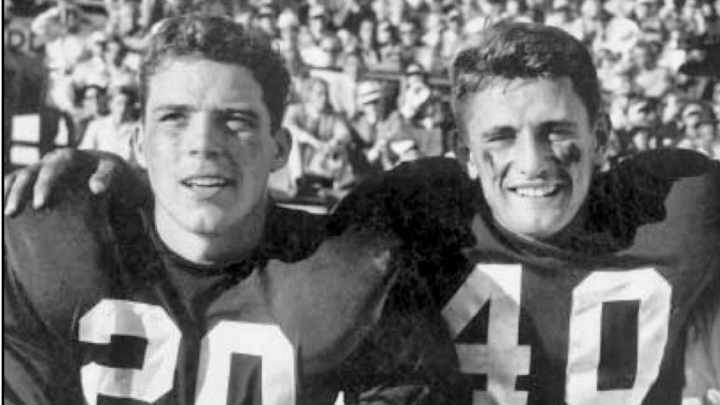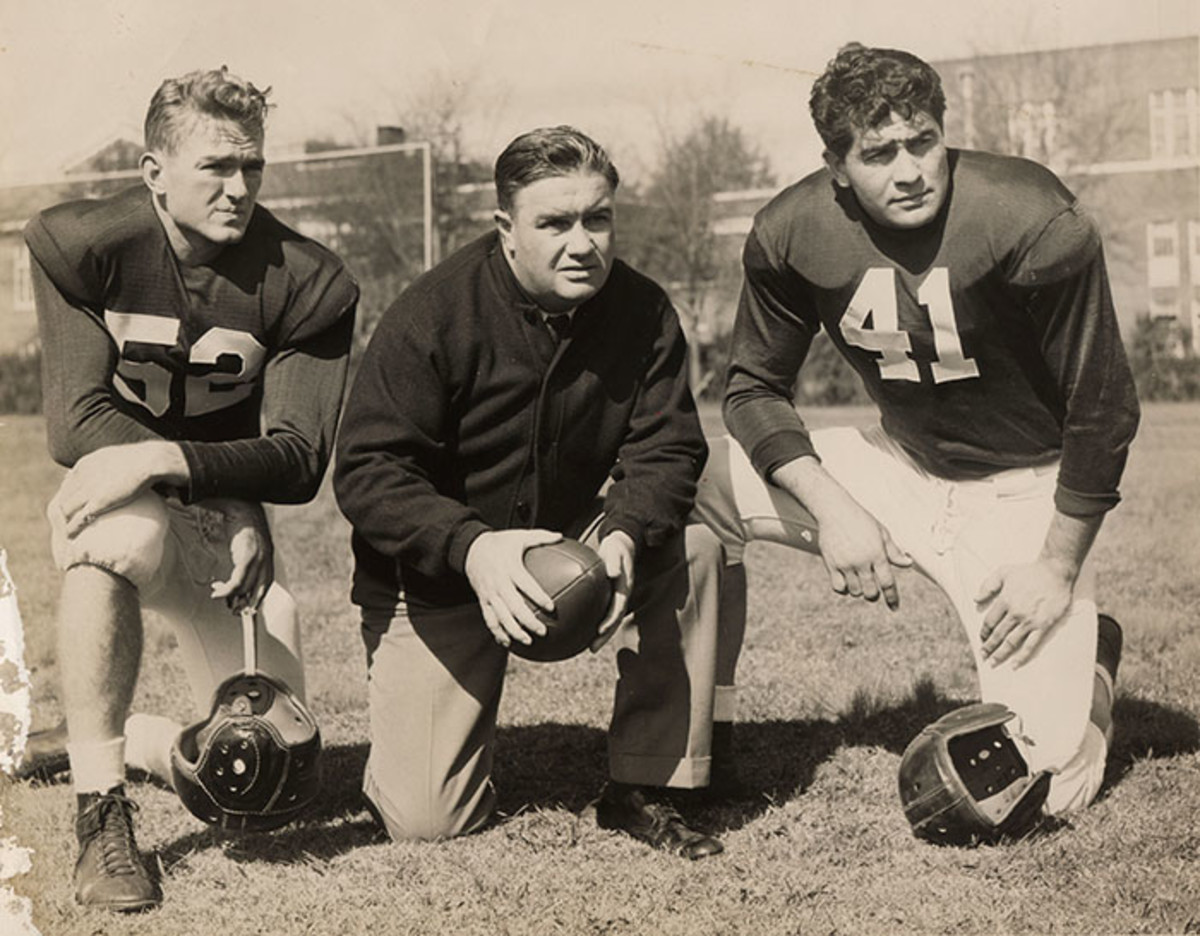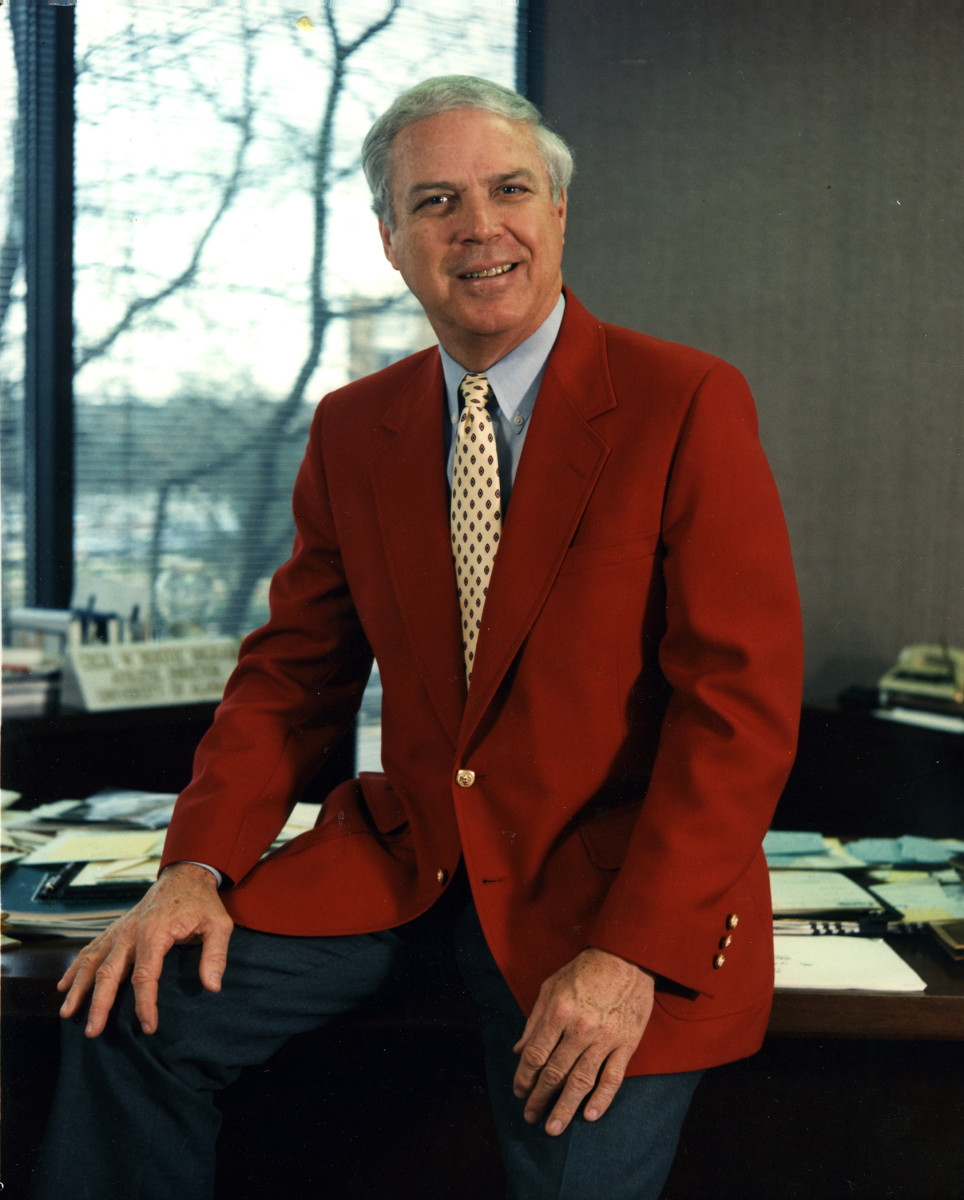Hometown Hero: The Story of Hootie Ingram

If you were to grace the pews of Calvary Baptist Church in Tuscaloosa on Sunday morning, you would likely run into several familiar faces from Alabama athletics.
One of those faces would be that of former Crimson Tide athletics director Cecil W. ‘Hootie’ Ingram.
“It was born in me,” Ingram said. “I’ve been going to church since before I knew what church was.”
With a long history of athletics under his belt as a player, coach and administrator at the University of Alabama and its surrounding high schools and having lived in Tuscaloosa for most of his life, Ingram is somewhat of a local legend.
Born in 1933 at Druid City Hospital in Tuscaloosa, Ingram is a true native of the city and has seen it evolve from a small college town into what it is today.
Ingram’s love of sports began when he was very young. Being in Tuscaloosa, it was difficult to get away from Alabama athletics, and Ingram was smitten with sports as a kid.
Ingram credits his lifelong passion for sports to a friend and his father who are both Tuscaloosa legends.
“I was very fortunate to grow up as a kid my best friend was Hugh Thomas,” Ingram said. “His father of course was Frank Thomas, who was the athletics director and the head coach and I grew up really in that atmosphere with coach Thomas and spent a lot of time there and gosh I started attending football practices at Alabama when I was in about the fifth grade.
“So after school I would take off there and go watch practice.”

A natural athlete, Ingram played three sports at Tuscaloosa High School: football, baseball and basketball. In football, he was selected as an All-State halfback. In basketball, he was elected to the All-Fifth District basketball team and in baseball, he played at the East-West All-Star Game in Birmingham.
Ingram took his athletic skills to the next level in the fall of 1951, lettering in both football and baseball for the Crimson Tide.
“I grew up here and was fortunate enough to go to the university, get a couple of degrees and play two or three sports and just the university has been very good for me,” Ingram said.
After playing both halfback and defensive back for Alabama and graduating with a bachelor’s degree in education and a master’s in school administration, Ingram signed a contract in 1955 with the Philadelphia Eagles but unfortunately never played a game for the team.
After coaching high school football at several high schools including Brookwood High School in Tuscaloosa, Ingram began serving as an assistant coach at the college level. His first college coaching job was at Wake Forest in 1960, but then moved on to Virginia Tech, Georgia and Arkansas.
In 1969, Ingram moved up yet again to his first head coaching job at Clemson. During his time with the Tigers, Ingram introduced the now-iconic “tiger paw” logo.
The addition of Ingram was another connection between the Crimson Tide in the Tigers, who have a long history of using coaches and administration from each others’ institutions.
After naming a long list of football connections highlighted by himself, former coach Frank Howard and current coach Dabo Swinney, Ingram finds the connection humorous.
“Clemson is smart,” Ingram laughed. “They knew where to go.”
After serving as the head coach through 1972 Ingram, now 39, resigned from the position. He then served eight years on the staff of the Southeastern Conference.
“I decided that I was going to go full-time administration,” Ingram said. “If you’re going to do that, the Southeastern Conference is a pretty good place to start.”
But then Ingram, never being one to sit in one place for too long, moved on to become the athletics director at Florida State in 1981. After serving for another eight years, Ingram then heard the call from his beloved home-city.

In September of 1989, Ingram signed a five-year contract to serve as athletics director of Alabama. Soon afterward, he hired Gene Stallings as the new head football coach, who led the Crimson Tide to a national championship in 1992.
“We wanted somebody that kind of knew what Alabama is all about,” Ingram said. “Alabama is a different place. It’s evidenced by recent years. Not just anybody can coach at Alabama.”
In 1995, Ingram retired from his position at the university after coming under scrutiny for rules violations, which resulted in the Crimson Tide being on probation for three years.
After retiring from athletic administration, Ingram served as a color analyst for Clemson’s football games before moving to the state of Florida visiting schools that didn’t have football programs and advising them on what was needed to start programs.
Under Ingram’s guidance, both Florida Atlantic and Florida International started up football programs of their own.
So what is Ingram up to now?
“Well I’m 86 years old and you don’t get up a lot when you’re 86 years old,” Ingram laughed.
Ingram serves on the board of deacons at Calvary Baptist. In addition to his duties as deacon, he also serves as the assistant to the secretary of Sunday school.
“I’m very active in my church,” Ingram said. “We enjoy doing that. I’ve had numerous different jobs in the church that I’ve enjoyed including the one I’m in now.”
Ingram also spends his time in retirement with his family.
“I have six grandchildren, five of them graduated from the university and one of them is halfway through,” Ingram said. “We’re close together so we spend a lot of time together.”
In a long life that began in Tuscaloosa, Ingram has no plans to move away from his beloved home town again.
“Once you’ve been around Alabama long enough you have a great love for it,” Ingram said. “My hometown, my school.”
